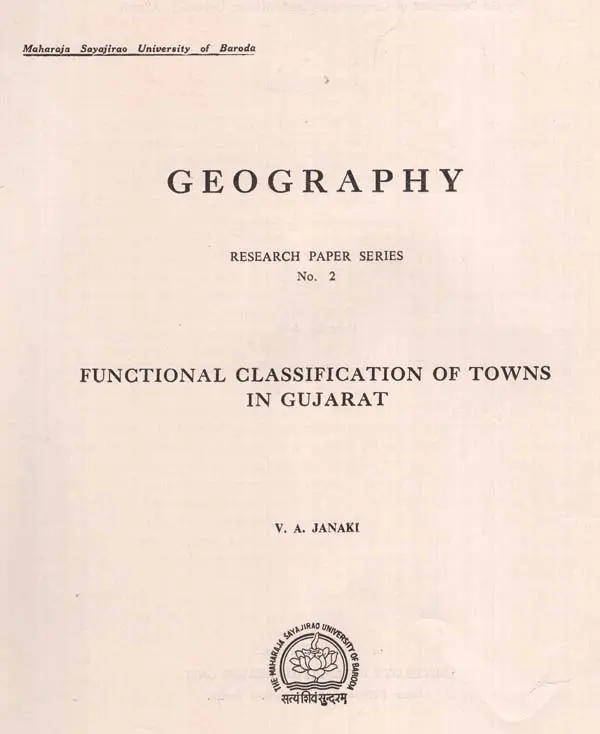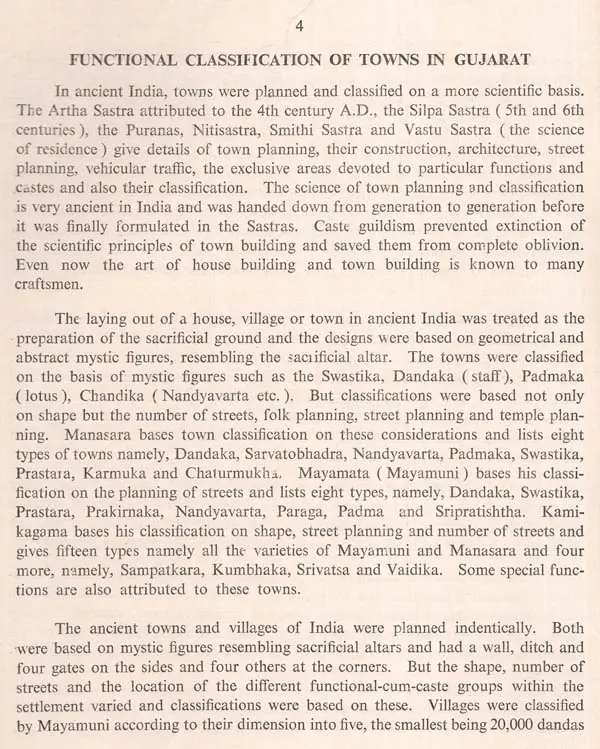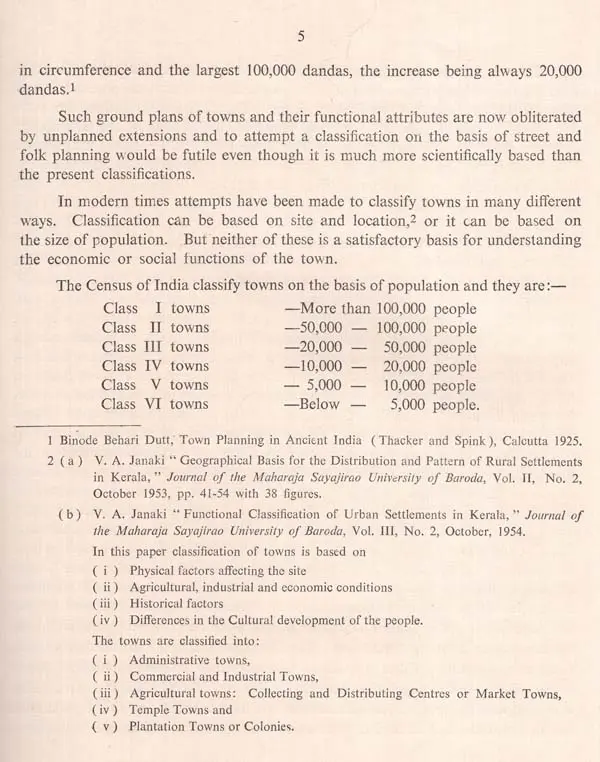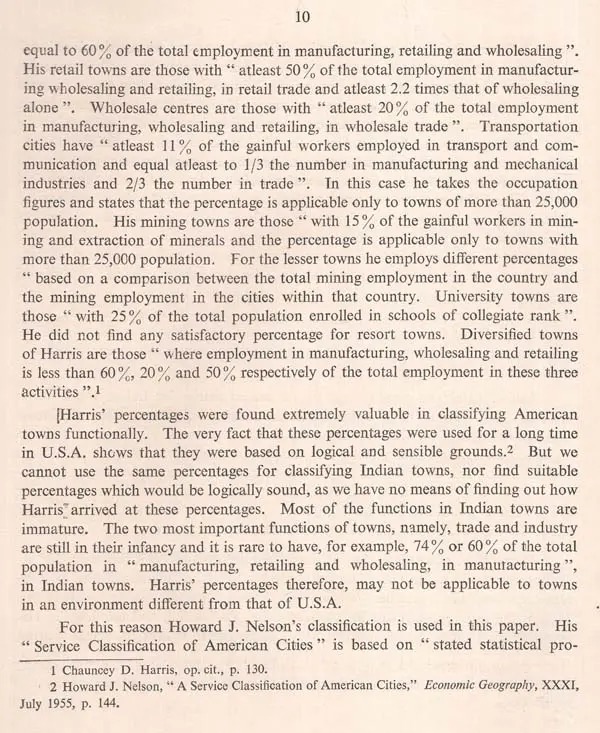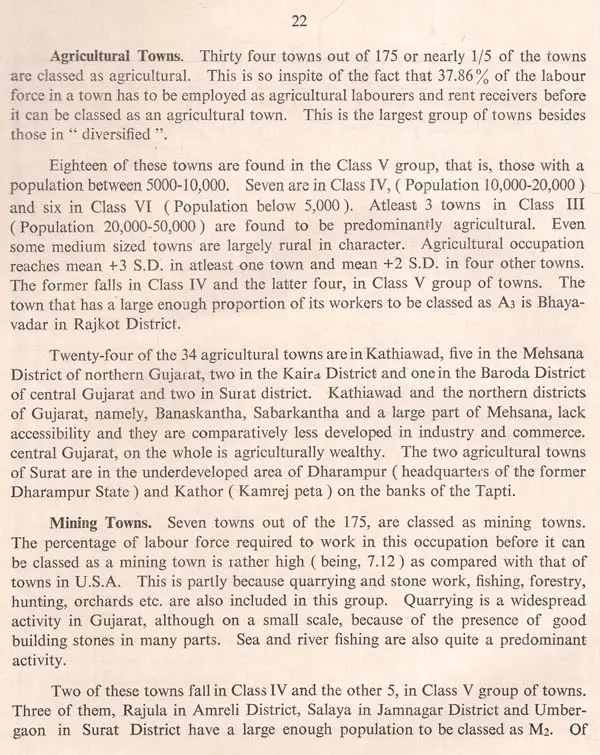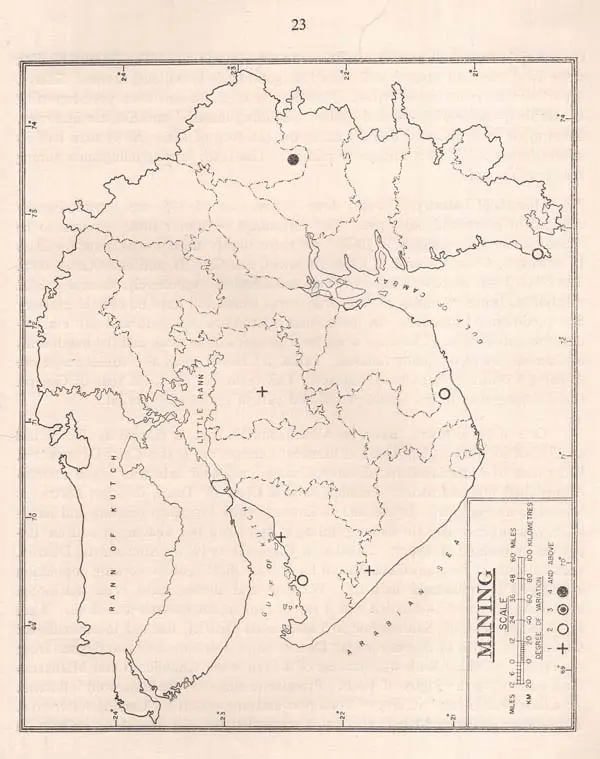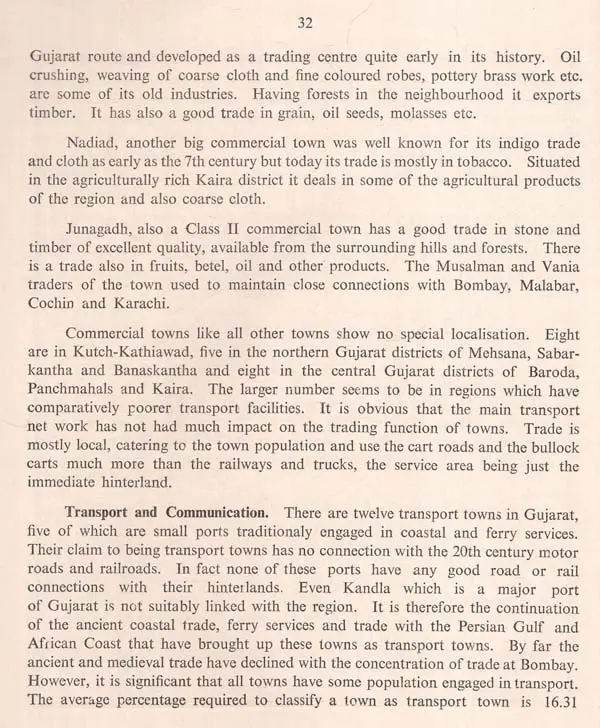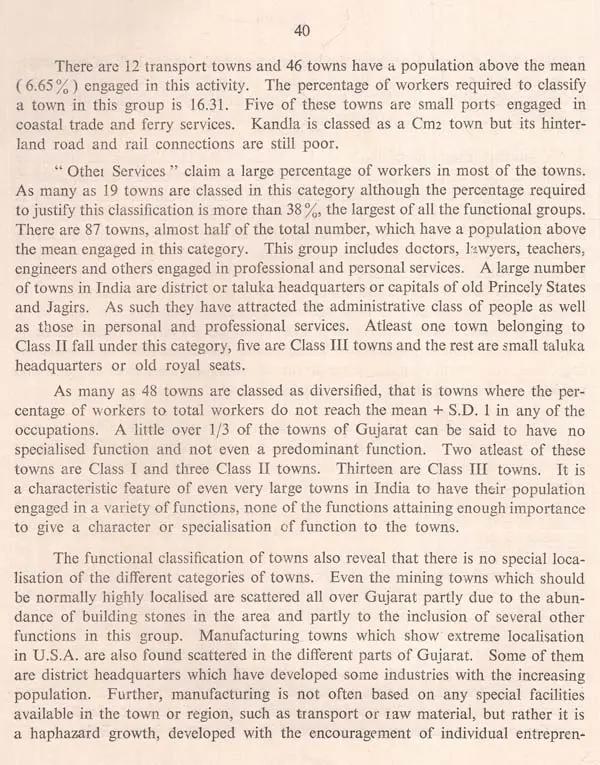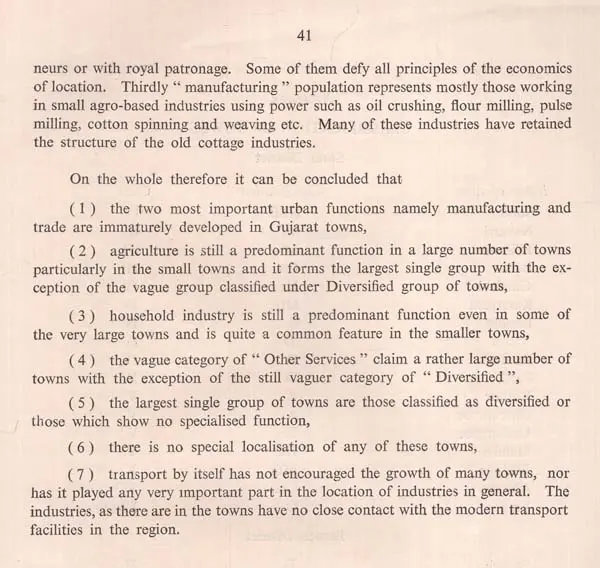
Functional Classification of Towns In Gujarat - Geography (An Old And Rare Book)
Book Specification
| Item Code: | UAQ776 |
| Author: | V.A. Janaki |
| Publisher: | The Mahraja Sayajirao University of Barodra |
| Language: | English |
| Edition: | 1966 |
| Pages: | 48 |
| Cover: | PAPERBACK |
| Other Details | 11.20 X 8.90 inch |
| Weight | 170 gm |
Book Description
The study of towns was taken up by geographers comparatively lately, and yet considerable advance has been made, mainly because of the increasing problems posed by some of the great cities in the post-war period. The approach to the subject is quite different from what it was in the 19th century. While the main stream of Geographic Thought has remained devoted to the study of the significance of areal arrangement and associations of phenomena on the surface of the earth, there were a few deviations in the 19th century, which persisted with some atleast, even in the 20th century. Geographic Thought in the 19th century tended to emphasis the deterministic role of the physical environment in shaping the culture and economy of man. This was due to the fact that the Physical and Natural Sciences had made great strides in the 19th century while the Social Sciences lagged behind. The physical and biotic processes of the earth were therefore better under stood than the human processes. The Theory of Evolution had a profound effect on the intellectual world of the day. William Morris Davis' Cycle Theory, defining the succession of changes in land forms as a cycle of youth, maturity and old age is an example of the impact of Biological Sciences on the Geographic Thought of the 19th century. Even Human Geography was studied mainly with a view to finding out the relationship between man and his physical and biotic environment. Man was considered to be the product of this environment, not as one who had the means of changing that environment, so much so that geography went through a period when it was defined as the study of the relationship between man and his natural environment. Geographers took great pains to discover the relationship between the human processes and the physical and biotic processes of the earth. To this School of Thought belong the afore-mentioned W. M. Davis, Ellen C. Semple, W. W. Atwood, Ellsworth Huntington, R. D. Ward, R. H. Whitbeck, Griffith Taylor and many others. This approach to geography persisted longer in the English speaking world, whereas in France and Germany it was challenged by Vidal de la Blache and Alfred Hettner. Influenced by what came to be known as the Deterministic School of Geo graphy, urban geographers also limited their study to site of towns and its relationship to such physical factors as geology, groundwater level, soil, contours, riverine features etc.
